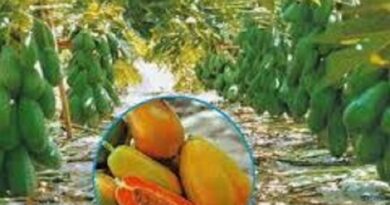What You Should Know About Spider Monkey
Spider Monkeys, known scientifically as Ateles, are celebrated for their remarkable adaptability to their treetop homes. With a unique set of physical features and social behaviors, these primates have carved a niche for themselves in the dense canopies of Central and South American rainforests.
Their striking appearance, engaging social structures, and acrobatic feats make them a subject of fascination and study for biologists, zoologists, and nature enthusiasts.
Taxonomy and Classification
Scientific Categorization
Spider Monkeys belong to the family Atelidae and the genus Ateles. They are part of the order Primates, which also includes humans, apes, and other monkeys. The scientific classification of Spider Monkeys is as follows:
- Kingdom: Animalia
- Phylum: Chordata
- Class: Mammalia
- Order: Primates
- Family: Atelidae
- Genus: Ateles
Distribution across Species
Within the genus Ateles, there are several species of Spider Monkeys, each with its unique characteristics and geographical range. Some of the most recognized species include:
- Ateles geoffroyi: The Geoffroy’s Spider Monkey is known for its long limbs and prehensile tail. It inhabits Central American rainforests.
- Ateles paniscus: The Black-faced Spider Monkey is found in various parts of South America and is distinguished by its dark facial fur.
- Ateles belzebuth: The White-cheeked Spider Monkey, also known as the Beelzebub’s Spider Monkey, is recognized for its pale facial fur and resides in the Amazon Basin.
Physical Characteristics of Spider Monkey
Body Size and Shape
- Size: Spider Monkeys are relatively large primates. They typically measure between 16 to 24 inches (40 to 60 cm) in body length and have tails that can extend up to 32 inches (80 cm).
- Weight: Adult Spider Monkeys generally weigh between 15 to 20 pounds (7 to 9 kg), with males being larger than females.
Unique Features
- Prehensile Tail: One of the most distinctive features of Spider Monkeys is their prehensile tail. This long and muscular tail acts as an extra limb, allowing them to swing from branch to branch and grasp objects with remarkable dexterity.
- Long Limbs: Spider Monkeys have exceptionally long limbs, which aid in their acrobatic movements in the treetops. These adaptations make them well-suited for life in the canopy.
- Facial Appearance: The facial appearance of Spider Monkeys can vary among species. Some have dark faces, while others have pale or white cheeks. These differences can help in identifying specific species.
Behavior and Social Structure of Spider Monkeys
1. Group Dynamics and Hierarchy
Spider Monkeys are highly social primates, often found living in groups known as troops. These troops can vary in size but generally consist of several individuals, often led by a dominant female. The social structure of Spider Monkeys exhibits the following characteristics:
- Matriarchal Society: Spider Monkey troops are typically matriarchal, with a dominant female at the helm. She plays a crucial role in leading the group, making decisions about travel, foraging, and resting locations.
- Male Members: Male Spider Monkeys may also be part of the group, and their position in the hierarchy is influenced by the dominant female. They may assist in protecting the group from predators and other threats.
Read Also: Man-Environment Interaction (Environmentalism, Possibilism, and Probabilism)
- Subordinate Females and Young: Subordinate females and young monkeys are an integral part of the troop, often forming strong social bonds. These bonds contribute to the cohesion of the group and help in raising the young.
2. Daily Activities and Interactions
The daily life of Spider Monkeys is a blend of foraging, social interactions, and resting. Here are some typical activities and interactions within a Spider Monkey troop:
- Foraging: Spider Monkeys are primarily herbivores, and a significant portion of their day is spent foraging for leaves, fruits, flowers, and occasionally insects. Their prehensile tails come in handy as they navigate the treetops.
- Vocalizations: Communication is essential within the troop. Spider Monkeys are known for their wide range of vocalizations, including calls, hoots, and screams, which help them maintain contact, signal danger, or communicate during feeding.
- Resting and Grooming: After a day of foraging and moving through the canopy, Spider Monkeys often rest and groom each other. Grooming serves both social and hygienic purposes, strengthening social bonds and removing parasites.
Habitat and Range
1. Natural Habitat Preferences
Spider Monkeys are creatures of the treetops, and their preferred habitat is the dense canopy of tropical rainforests. They are especially fond of:
- Lowland Rainforests: Spider Monkeys are commonly found in lowland rainforests, although some species may venture into montane or cloud forests at higher elevations.
- Old-Growth Forests: They prefer old-growth or mature forests with a well-developed canopy, offering ample opportunities for swinging and foraging.
2. Geographic Distribution
The geographic distribution of Spider Monkeys spans the tropical regions of Central and South America. Some of the species-specific distribution areas include:
- Ateles geoffroyi: Found in Central American countries such as Mexico, Guatemala, Honduras, Nicaragua, and Costa Rica.
- Ateles paniscus: Ranges across South American countries, including Brazil, Colombia, Venezuela, and Ecuador.
- Ateles belzebuth: Resides in parts of the Amazon Basin in countries like Peru, Colombia, and Brazil.
Diet and Feeding Habits
1. Primary Food Sources
Spider Monkeys are primarily herbivorous, with a diet that includes:
- Fruits: Fruits make up a significant portion of their diet and vary based on seasonal availability. They play a vital role in dispersing seeds throughout the rainforest.
- Leaves: Spider Monkeys consume a variety of leaves, with a preference for young, tender foliage.
- Flowers: The consumption of flowers provides them with essential nutrients and is often part of their diet.
- Insects: While not a primary food source, Spider Monkeys may occasionally supplement their diet with insects, especially during periods of fruit scarcity.
- Bark and Nectar: Some species may consume bark and nectar, although these are less common food items.
Spider Monkeys’ dietary preferences are essential for maintaining the ecological balance of the rainforest, as they serve as seed dispersers for many plant species. Their foraging behavior contributes to the regrowth and diversity of the forest.
Reproduction and Life Cycle of Spider Monkeys
1. Mating Behavior
Spider Monkeys exhibit intriguing mating behavior as part of their complex social structure. Some key aspects include:
- Promiscuous Mating: Female Spider Monkeys may mate with multiple males within the troop, and males may compete for the attention of the dominant female.
- Mating Displays: Males engage in vocalizations and physical displays to attract females. These displays can include swinging through the canopy, demonstrating their agility and strength.
- Dominant Female’s Choice: The dominant female has a significant say in mating decisions, often selecting the male she prefers to mate with.
2. Gestation and Infancy
The reproductive cycle of Spider Monkeys includes the following stages:
- Gestation: The gestation period for Spider Monkeys typically lasts about 7 to 7.5 months. This relatively long period is followed by the birth of a single offspring.
- Infancy: Newborn Spider Monkeys are entirely dependent on their mothers for care and nourishment. They cling to their mother’s fur, and the prehensile tail of the mother provides extra support. Infants are weaned at around one year of age.
3. Adolescence and Adulthood
As Spider Monkeys grow and mature, their roles and social positions within the troop evolve:
- Adolescence: Adolescent monkeys begin to explore their environment and may form close bonds with other young monkeys. They gradually gain independence from their mothers.
- Adulthood: Adult Spider Monkeys contribute to the group’s well-being by foraging, protecting the troop, and participating in social interactions. The dominant female continues to lead the group.
Conservation Status
1. Threats and Challenges
Spider Monkeys, like many other rainforest species, face significant threats to their survival:
- Habitat Loss: The destruction of tropical rainforests through deforestation, logging, and agriculture is a primary threat to Spider Monkeys. As their natural habitat diminishes, their populations are severely impacted.
- Hunting: Spider Monkeys are hunted for their meat, and their young are sometimes captured for the pet trade. This direct exploitation poses a significant threat to their populations.
- Climate Change: Climate change can affect the availability of food sources, impacting Spider Monkey diets and potentially leading to habitat shifts.
- Fragmentation: Forest fragmentation can isolate Spider Monkey populations, reducing genetic diversity and making it harder for them to find suitable mates.
2. Conservation Efforts and Initiatives
Efforts to protect and conserve Spider Monkeys and their habitat are crucial:
- Protected Areas: Establishing and maintaining protected areas and reserves is a fundamental strategy to safeguard Spider Monkeys. These areas offer safe habitats for these primates and other wildlife.
- Anti-Poaching Measures: Enforcing laws against hunting and illegal trade is essential. Anti-poaching efforts and community-based conservation programs help reduce the threats posed by hunting.
- Reforestation and Habitat Restoration: Restoring and replanting forests can help mitigate the effects of habitat loss. These efforts create additional habitat for Spider Monkeys and support the broader ecosystem.
- Research and Education: Scientific research on Spider Monkeys and their behavior is vital for their conservation. Education and awareness programs help engage local communities and foster a sense of stewardship for these primates and their rainforest homes.
Interactions with Humans
1. Traditional Cultural Significance
Spider Monkeys hold cultural significance in some indigenous communities. They may be featured in stories, folklore, or art, reflecting their importance in local traditions.
2. Conservation Partnerships and Research
Collaboration between conservation organizations, governments, researchers, and local communities is essential for Spider Monkey conservation. These partnerships help fund research, enforce protective measures, and support educational initiatives. Ongoing scientific research into their behavior and habitat requirements also contributes to their conservation.
Understanding the complex life cycle, behavior, and the various challenges Spider Monkeys face is essential for developing effective conservation strategies. By addressing habitat loss, hunting, and other threats, and by promoting sustainable practices, we can work towards the preservation of these remarkable primates and the rich biodiversity of tropical rainforests.
Read Also: A Comprehensive Guide to the Future of Tech Investment




